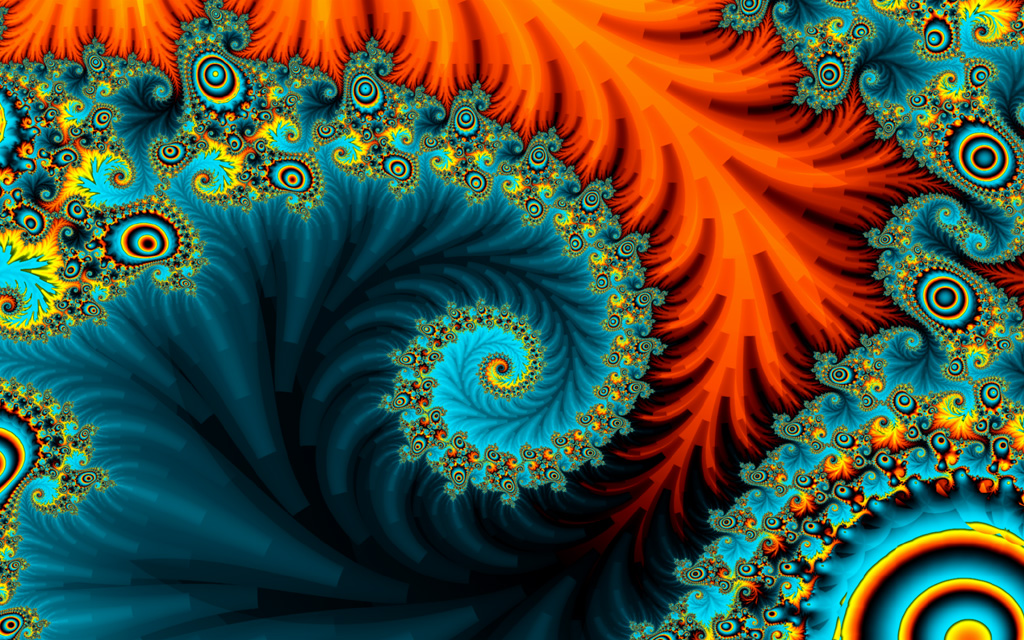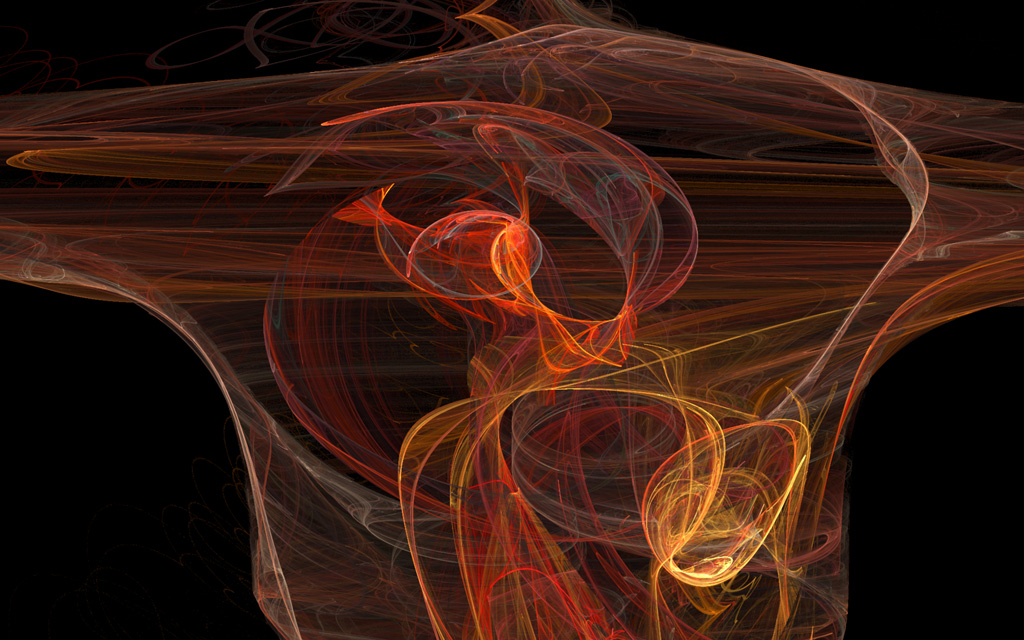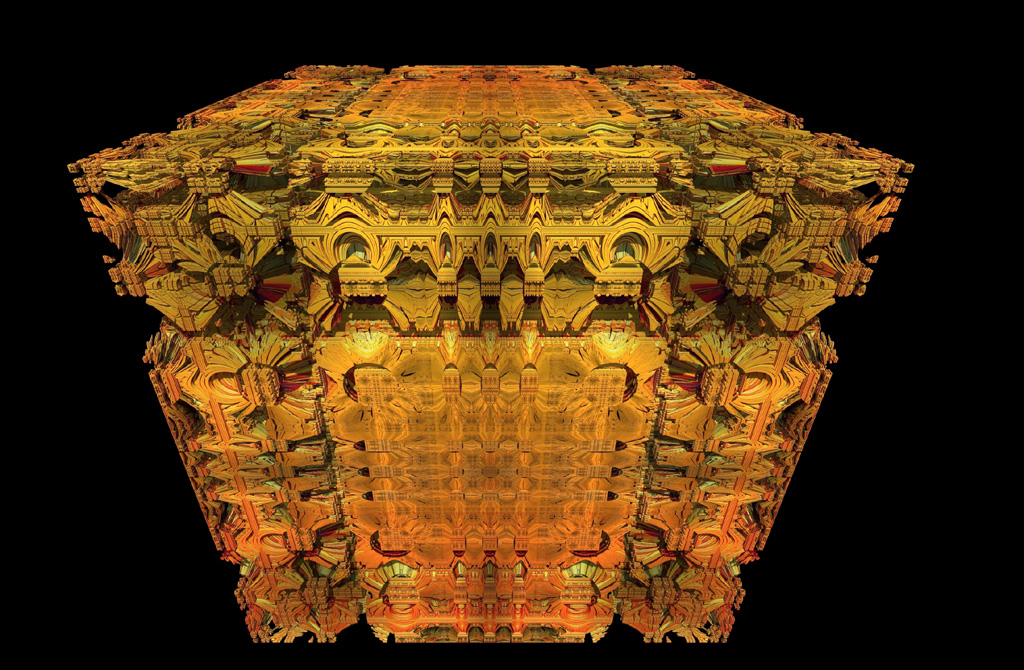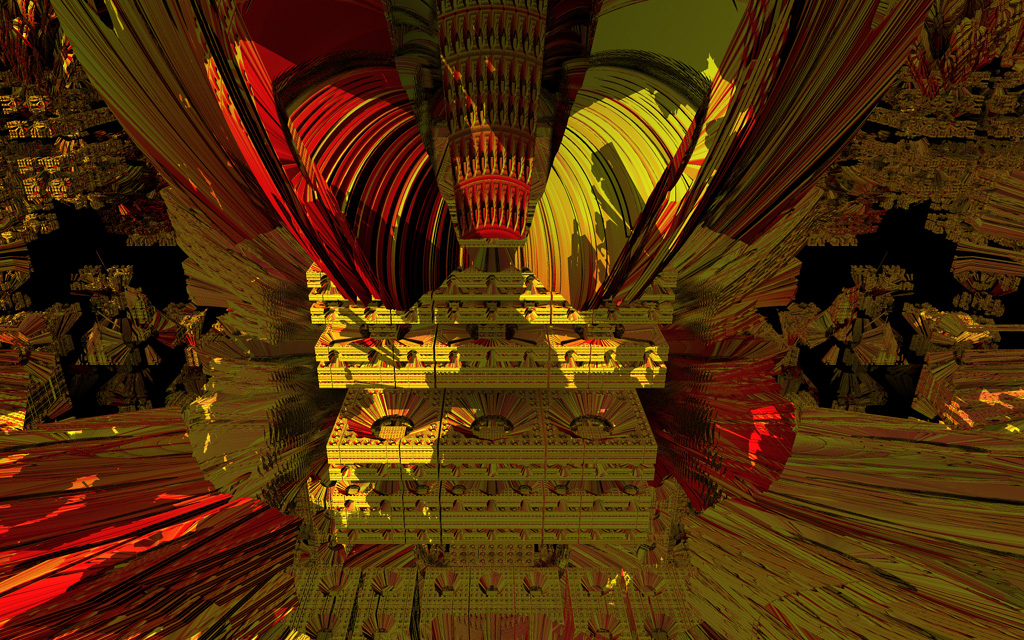3D Fractals
The Mandelbrot fractal (circa 1971, at left) is intrinsically two-dimensional (although pseudo-3D versions can be made by, for example, using the escape velocity of X-Y starting points as a surrogate for height). Lorenz's (1963) strange attractors, and more recent fractal constructions by others in 2009+ are truly three-dimensional. That is, the calculations explicitly involve recursions in X, Y and Z (whereas Mandelbrots only iterate formulae predicting new values of X and Y, given their previous values, and a couple of fixed parameters). It is natural to display and observe both Lorenz's and these newer results in 3D space. Even more intriguing is watching sequences of fractal images, made into 3D movies, where each frame is obtained with a given set of parameters. As the parameters are slowly ramped up or down, a fractal morphology is generated. This can be both hauntingly beautiful and scientifically interesting (e.g. different instabilities, or perhaps islands of normality embedded in a sea of chaos, can arise). Choosing the right parameter values in the first place, and varying them properly in order to make a compelling video, are important keys to successful "stereoscopic motion art". Making a good 3D movie in high-resolution (i.e. full HD and beyond) can also be very time intensive, taking tens of thousands of core CPU hours. But it is well worth it! Check out the Free video downloads.
|
||||||
© Hart3D - All Gallery images and videos are copyrighted John Hart. All rights reserved. No part of these pages, either text, videos, or images, may be used for any purpose other than for personal viewing. Reproduction, modification, storage in a retrieval system or retransmission, in any form or by any means, electronic, mechanical, or otherwise, is strictly prohibited without prior written permission.
|

 After
studying chaotic dynamics at MIT in 1966 with Edward Lorenz (the
founder of chaos theory), Prof. Hart has always been interested in dynamical
systems and fractals. Much of his research career in Atmospheric and
Oceanic Science concentrated on fluid instabilities and turbulence
where these ideas have been productively used. He started making 3D
fractal videos in 2008, and the time consuming process of making
full-resolution 3D videos lasted through 2013.
After
studying chaotic dynamics at MIT in 1966 with Edward Lorenz (the
founder of chaos theory), Prof. Hart has always been interested in dynamical
systems and fractals. Much of his research career in Atmospheric and
Oceanic Science concentrated on fluid instabilities and turbulence
where these ideas have been productively used. He started making 3D
fractal videos in 2008, and the time consuming process of making
full-resolution 3D videos lasted through 2013.


